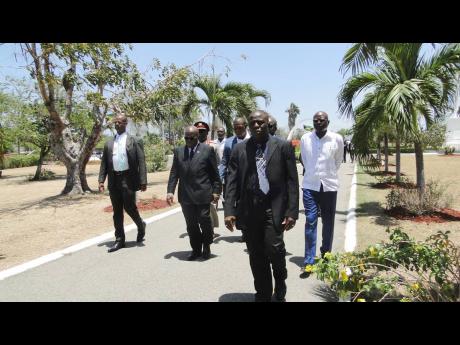Ghana president pays tribute to National Hero Marcus Garvey
The small gathering of Ghana President Nana Addo Dankwa Akufo-Addo and his entourage, members of the security forces, media personnel and onlookers, belied the significance of the moment. For it was when the president himself lay a wreath at the monument of National Hero Marcus Garvey on Sunday, June 16.
There was no fanfare, and the president just did the job at hand after briefly greeting some of the people in attendance, including Minister of Culture Olivia Grange. No other monument was visited.
The Republic of Ghana has had a lengthy ancestral and political relationship with Garvey, since its first president, Kwame Nkrumah, was a staunch advocate and supporter of Garvey’s philosophies. Even the black star at the centre of the flag of Ghana was adopted from Garvey’s Black Star Line.
Later in the morning, while the president was addressing members of the Jamaica-Ghana community inside The Jamaica Pegasus hotel, he said Nkrumah was “heavily influenced” by Garvey when he was studying in the United States. When Nkrumah became president of Ghana, he named the first shipping line the Black Star Line “in honour of Marcus Garvey”.
When the president of the Ghanaian Association in Jamaica, Benjamin Asamoah, suggested that the Black Star shipping line be resurrected and a Black Star airline be established to transport people from the Caribbean to west Africa, the president said the idea was “appealing”.
Sunday was the second day in a row that the president was involved in a wreath-laying exercise. The day before, he and other people laid wreaths at the African Tomb, located at Seville Heritage Park in St Ann.
The tomb contains the remains of three enslaved Africans that were found between 1987 and 1991 in the village where enslaved Africans lived behind the great house. After much testing, it was concluded that the remains of two males and two females, excavated by archaeologist Douglas Armstrong of Syracuse University in New York, were those of Africans who were brought over from Ghana.
On August 1, 1997, three of the remains, the two males and one of the females, were reinterred at the spot where the tomb is. The other female was repatriated to Ghana for reburial in 1998.

